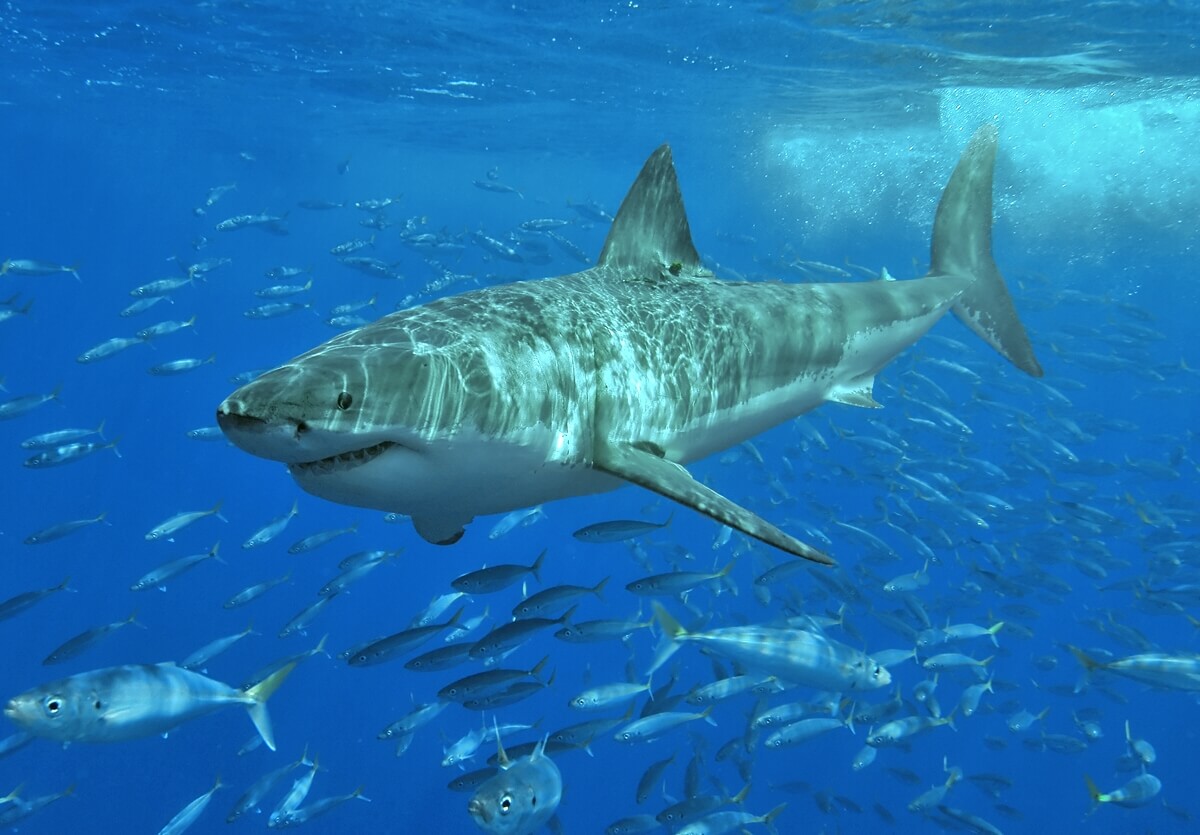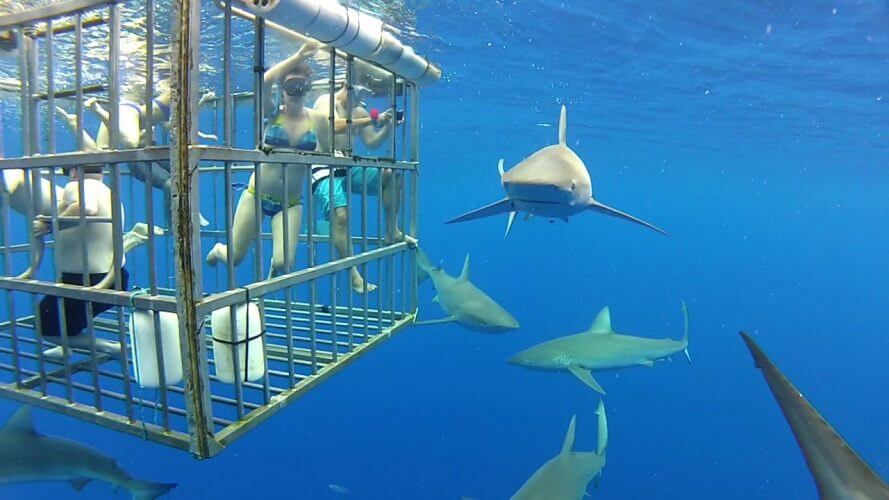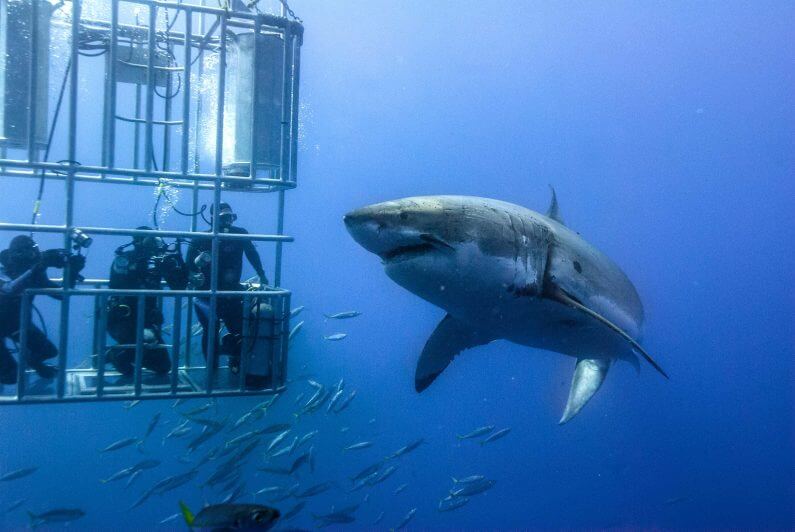Getting up close and personal with the Great White Shark
Whereas many breeds of Shark are restricted to one specific area, the Great White Shark knows no boundaries and has been spotted worldwide, swimming in both warm and cold waters and in both shallow seas and deep oceans. These predators don’t tend to stay put for long, and sometimes embark on epic journeys across oceans, but there are certain hot spots where Great White Shark sightings can always be relied upon. These are usually in warmer seas in areas where there is a constant food supply, often in the form of a seal colony.

To see a Great White Shark in its natural environment, your best bets are the Isla Guadalupe, an island off the west coast of Mexico, California, South Australia, and South Africa. Read on to find out about the best spots to see them in each country, and our suggestions for the most reliable tour operators to go with, along with a few other useful details about these once in a lifetime opportunities.
South Africa
Most of the hot spots for Great White Shark sightings in South Africa are off the Western Cape, near Cape Town. There are two ‘Seal Islands’ which attract sharks, one of them in Mossel Bay and one in False Bay, and sharks can also be seen at Dyer Island and Geyser Rock, near Gansbaai. The best place to see sharks breaching whilst they hunt is Seal Island in False Bay, famous for its spectacular ‘flying’ sharks.

African Shark Eco-Charters run out of Simon’s Town and offer transfers from various points in Cape Town. They operate in False Bay and put both your safety and the shark’s well-being first, making sure that your encounter is as natural as possible. Their most popular trip is the ‘AIRJAWS’ Shark Breaching Tour, which combines witnessing the sharks breaching in the bay with shark cage-diving. They have a limit of 12 people per boat and the tours run from May onwards, with peak season being June-August. Prices start at ZAR 2400, excluding transfers.
http://www.ultimate-animals.com/
South Australia
Port Lincoln, in the state of South Australia, was where cage-diving with sharks was pioneered. There are several tour operators around, but you can go on the search for Great Whites with the company set up by the first man to come up with the idea of cage-diving, Rodney Fox. Rodney survived a vicious shark attack which left him for dead, but managed to overcome his fear of the water and built the first ever shark cage. The live footage for the classic film JAWS was filmed in one of Rodney’s cages. Since 1965, Rodney Fox, and his son Andrew, have been offering cage-diving tours, and also conducting research into these fascinating fish.

There are no day trips on offer here. Their Great White Adventures depart roughly twice a week and generally last for three days and two nights, although they do also offer a four-day, four-night adventure. Prices start at AUD$1495 and slots book up well in advance, so make sure you get organised. You can either fly to Port Lincoln from the state capital of Adelaide, which is in turn connected with all big Australian cities and a few international airports, drive the 7.5 hours or hop on the daily bus. Adventures here operate all year round, depending on the weather.
Isla Guadalupe, Mexico
The tour operators in Isla Guadalupe, Mexico, claim that this is the best destination in the world for getting up close and personal with Great White Sharks, due to the crystal clear water with visibility of between 125-150 feet. A recent count identified 172 different Great Whites in the bay where the diving takes place, attracted by the islands’ huge population of fur seals and elephant seals. The season runs from July to November, with different types of shark appearing at different times, such as groups of male sharks in July and August and huge, dominant females in November.

Img: http://gansbaaisharkcagediving.com/
This volcanic island is in the Pacific, 260km west of the coast of the Baja California Peninsula, so getting to see the sharks here means taking a live-aboard trip, with an 18 to 20-hour journey to reach the islands. The Nautilus Belle Amie leaves from San Diego, and prices start at $2795 for the six day, five night, all-inclusive trip, including three days of cage-diving.
http://www.guadalupegreatwhitesharks.com/
California
Just like in South Africa, in California, you can find Great White Shark cage-diving day trips, rather than liveaboard adventures. The Farallon Islands are just 29 miles west of San Francisco and technically within the city limits. Day trips to the Farallon Islands with Great White Adventures last 12 hours and are limited to 12 divers, as well as 6 extra people who can go along to observe from the deck. Great White Adventures only run their expeditions during the Great White’s peak hunting season, between late September and November. Tours go out 7 days a week, and you’re likely to witness sharks hunting whilst on the boat.
If you only want to look on from the safety of the boat, a day trip for an observer costs $375 per person, but if you want to get closer to these incredible animals and do a cage-dive it will cost you $775. Both include food and drinks. Trips leave from Berkeley Marina in San Francisco bright and early, at 6am.
http://www.greatwhiteadventures.com/farallones.html
If you’re only in the market for a day trip and don’t fancy a full-on liveaboard expedition with multiple cage-dives, then South Africa or California are where you need to head to come face to face with a Great White Shark. For those who want to get up close to these predators as many times as possible, a live-aboard adventure will give you multiple chances to get in the water with Great Whites. Wherever you choose to have your close encounter, remember to keep your arms, legs and cameras inside the cage at all times, and get ready to be awed by the might of the Great White Shark.